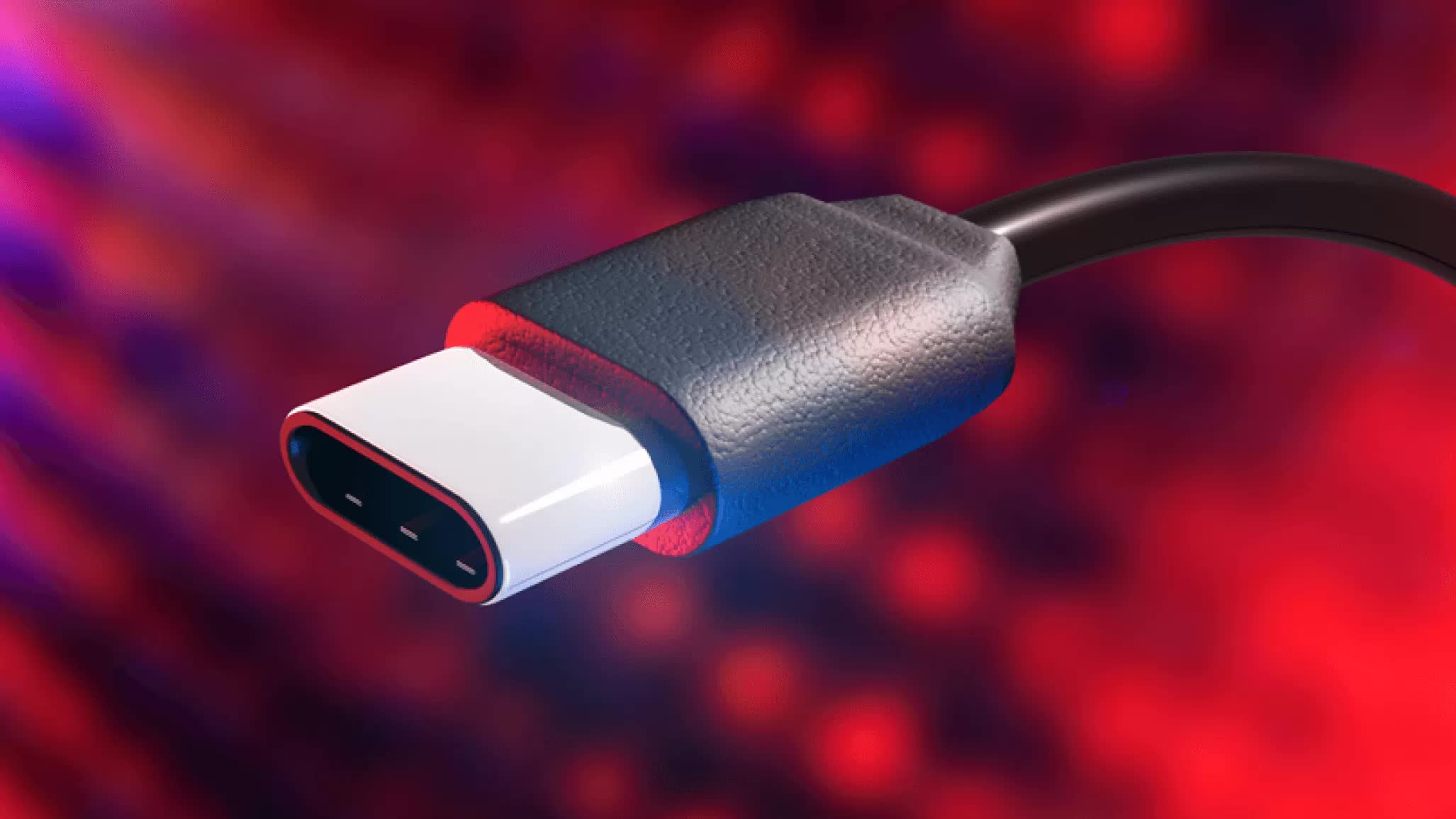In brief: The USB Implementers Forum announced a new revision to the USB-C standard. With the USB-C revision 2.1, the interface’s power delivery will be upgraded from 100W to 240W, allowing devices such as 4K monitors and TVs, printers, and even gaming laptops to be powered via a USB-C interface.
The USB-IF announcement indicates that the 240W power option is called Extended Power Range (EPR). To handle 240W of power, the USB-IF changed the USB-PD spec. While the amperage will still be configurable up to 5A, the maximum voltage has been increased from 20V (USB-C 2.0 standard) to 48V.
The EPR cables will need to meet some requirements to handle the extra power, including support for 5A and 50V, a minimum functional voltage of 53.65V, and electrical components such as bypass capacitors rated for a minimum of 63V. USB-IF also recommends the use of snubber capacitors on each end of the cable to prevent arcing damage when unplugging.
Moreover, the new cables should be electronically marked and properly identified so users can easily distinguish them from standard USB-C cables. However, there won’t be any physical changes to the plugs, so users can plug a USB-C 2.1 device into a USB-C 2.0 port and vice-versa without issues.

With the new standard, USB-IF also announced the deprecation of Standard Power Range (SPR) cables. The institution stated that devices supporting the higher wattage of the USB-C 2.1 standard should be available on 2H 2021.
If USB-IF keeps increasing the maximum power delivery supported on a USB-C interface, it may be just a matter of time before it becomes the new standard to charge laptops. USB-C is already widely used as a charging port, but the most power-hungry gaming laptops usually need more than 240W to power the whole system.
Source link